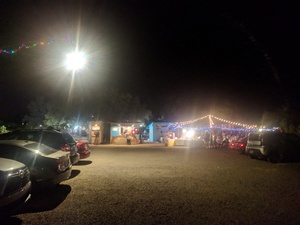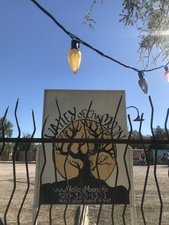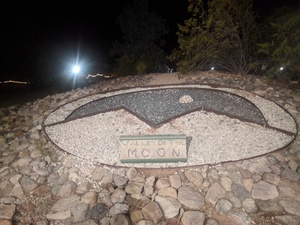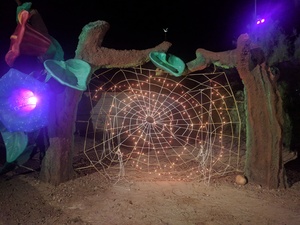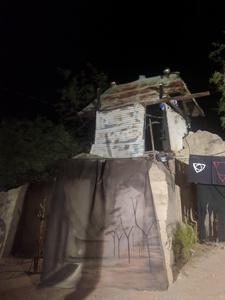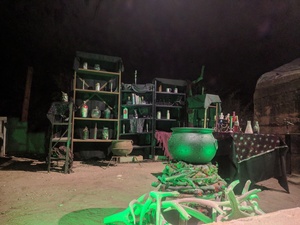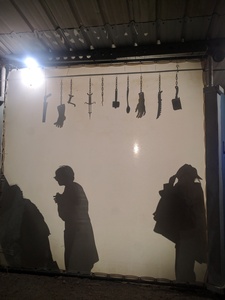Valley of the Moon
During the 1920s, George Far Legler decided to build a place of living fairy-tale dedicated to mental health. He was a visionary artist who wanted to create a place where adults could go and relax or “to heal the mind and soul as well as the body” (Valley of the Moon, 2017). The goal for Valley of the Moon was to create a location where people can feel comfortable and find happiness through kindness to others. It is a unique experience that not many cities have, a place that seeks to create kindness and experience a sense of magic with families and friends. Some of the famous sites' values include; kindness, community, balance, sanctuary, and stewardship (Pittenger, 2016). These values create an atmosphere like no other that brings almost everything and everyone together. The values of Valley of the Moon are critical because they pride themselves in being a comfortable and spiritual place where your imagination can run free. They also work hard on preserving the historical status of the site for future generations to experience and enjoy (Valley of the Moon, 2018). This location was dedicated to appealing to children’s imagination and bringing “mental and spiritual healing to all visitors” (Jarrett, 2017). Valley of the Moon first started as a non-profit organization and continues to be to this day. The first board directors included: George, Rose, Randall, and Frank (Valley of the Moon, 2018). According to Zack Jarrett, the current president at Valley of the Moon, it took George nine years to complete the construction of his fairy-tale land. The construction began in 1923 but George didn't open Valley of the Moon until the 1960s. “To George Phar Legler fairies were real” (Pittenger, 2016). Legler wanted to create a location that gave fairies and people the opportunity to escape the city and at the same time hear enchanting stories (Pittenger, 2016). One of the reasons George Far Legler truly believed in fairies was because around the 1920s there was a story that two girls had seen these fairies (Valley, 2017). They even had a photograph of the encounter and for Legler, this was enough proof. This is where his passion began to emerge. He wanted to recreate a magical place in hopes that he too would have an encounter with fairies or so magical creatures would find it as a home. The following link is a video of George Phar Legler reading the poem, “On a Cloudy Day” https://youtu.be/JZ5w7gwT_L4
George Far Legler moved to Tucson in 1917 after raising three children in Evansville, Indiana with his wife Felix. Shortly after moving, he purchased 2.25 acres of land that would eventually become the setting for Valley of the Moon (Valley, 2017). George was known by many to be a kind, generous, and peaceful man who had a passion for entertaining children. A key aspect of the inspiration for Valley of the Moon was Georges's spirituality, including his belief in ghosts, fairies, and other magical creatures. He was able to incorporate one central theme into all of his work since 1923, that Kindness to All is the Golden Key to Happiness (Valley of the Moon, 2018). Another big inspiration for this site came right after George Legler went to visit a terminally ill 14-year-old girl, who was the daughter of a local clergyman. Since the girl could not leave her room, Legler decided to create a cement wall outside of her window featuring a beautiful mountain scene with a waterfall, plants, fish, and even a lake made out of a bathtub. He told the girl that she could always climb up the ladder to the waterfall "in her imagination" (Valley of the Moon, 2018). Two years later, George was asked to speak to the grieving mother of the little girl about his spiritual beliefs. Shortly after, he realized his potential to help others and "decided there should be a place where everyone could express their imagination and heal the mind and spirit" (Valley of the Moon, 2018).
Legler also helped open the first Spiritual list Church of Tucson. As he approached the middle of his life, George decided to dedicate the rest of it to promote happiness, kindness, mental and spiritual health (Valley of the Moon, 2018). Since the beginning, George had artists paint on his property, such as Frank Thibault who also helped him with building Valley of the Moon. Currently, a local artist by the name of SLOV has a few paintings on the entrance of the property. Valley of the Moon is constantly renovating and changing in themes which creates a unique experience with every encounter. Whether it is in scenery, theme, or structure, visitors are guaranteed to leave with a new experience.
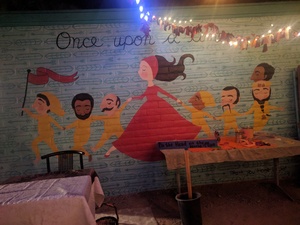 "Once Upon a Time" by SLOV
"Once Upon a Time" by SLOV Local Artists leave behind their signature on Paintings at Valley of the Moon.
Local Artists leave behind their signature on Paintings at Valley of the Moon.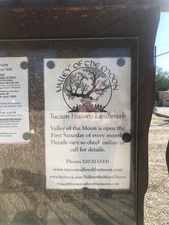
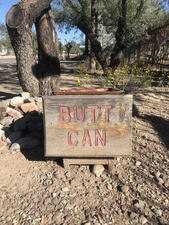
Frank also helped George with performing shows and they were originally the first to set off what Valley of the Moon calls "a tour of followers” (Valley, 2017). Legler used to raise rabbits to eat them and from raising them, he found out that they could be taught to do tricks. “In the early 1940s, he created ‘Bunnyland Theater’. Which was a vaudevillian performing animal circus” (Pittenger, 2017). The Bunnyland Theater caught many people’s attention that they would travel from many locations just to see these rabbits perform. George Far Legler had a significant stomach alignment problem. One thing that Legler enjoyed recreating was water scenes, especially in Arizona. He enjoyed creating waterfalls, lakes, rivers, ponds and in these watered areas were fish, ducks, and geese (Valley of the Moon 2018). George’s eyesight began to fail, he deeded the property to Valley of the Moon Memorial Association, Inc. also known as VOMMA (Valley, 2017). Among that association were George’s wife Rose, his friend Frank, Randall, and George himself. Since then, Valley of the Moon became a non-profit organization that focuses on providing entertainment and unique experiences. Because of his illness, during the 1960s, Legler was not able to maintain Valley of the Moon together (Valley, 2017). He never closed the location, but it began to fall apart. In 1971, Legler came across a group of students from Catalina High School trespassing on his property (Valley, 2017). Legler welcomed them and gave them a tour of his property. These same students helped Legler rebuild his fairy-tale land and also helped spread the word of Valley of the Moon. The students also decided in helping Legler, who had been living in the cave rooms for over 30 years, get a trailer for himself to live in more comfortably. It has been many years since Legler’s passing and many times that the location was in danger of closing down. Now, Valley of the Moon is composed of volunteers and fans that help not only maintain the location but keep the tradition that Legler hoped to achieve (Nothaft, 2017). “In 2011 Valley of the Moon was placed on National Register of Historic Places” (Nothaft, 2017). Valley of the Moon is also featured in Atlas Obscura, a website dedicated to finding unique, different, and strange locations around the world with unique features. https://www.atlasobscura.com/places/valley-of-the-moon. Valley of the Moon is located at 2544 E. Allen Road, the cost for admission for anyone 15 years or older is $10, $5 for students, and children go in free. Every first Saturday of the month is free to visit for everyone from 6 to 8 p.m. Every third Sunday from 2 to 4 p.m. they offer historical tours with an admission cost of $5. Valley of the Moon plans on giving the opportunity for events such as weddings, birthday parties, and special events to become available in their location soon.
Buy your ticket at the ticket stand for your journey to begin.
Volunteers of all ages for Storytelling.
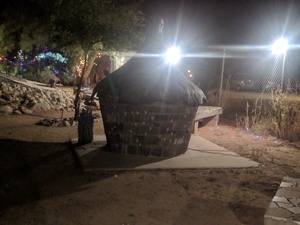 Unique structures
Unique structures 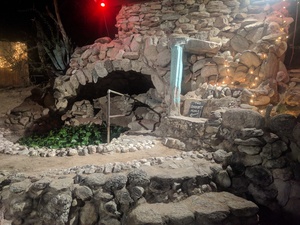 Explore a whole new world.
Explore a whole new world.
Valley of the Moon is not a very popular location in Tucson, in fact, not many people know of its location or history. It is hidden gem in the city of Tucson. Since not many people know that it exists, Valley of the Moon can only afford to open during the weekends. The more visits this location gets, the more it will be open to the public. One of the months that it receives the most visits is October. During this month, they include tons of fun activities for people of all ages, including haunted hayrides and Halloween-specific tours or events (Valley of the Moon, 2018). Zack Jarret, current president of Valley of the Moon, states that in October, they are open more days than any other month of the year. This location is a place that a family can go to escape the world and rejuvenate their mind, body, and soul. The experience is like walking into a fairy-tale story and witnessing it in real life. The volunteers are very nice and welcoming, they also vary in ages. Kids and adults of all ages are welcome to participate in the story-telling. At the end of the story or journey, visitors have the opportunity to make a donation to help support Valley of the Moon. Donations can also be made online through the organization's website at https://www.tucsonvalleyofthemoon.com/donate. More ways to support the historic preservation and operations of Valley of the Moon can be found at https://www.tucsonvalleyofthemoon.com/support.
References
Pittenger, Angela (2016, Jan 27). HappAdd a caption iness, enchantment happen at historic Valley of the Moon. Arizona Daily Star. Retrieved on October 28, 2017.
Valley of the Moon. History. Retrieved on October 30, 2017. http://www.tucsonvalleyofthemoon.com/history.html
Valley of the Moon, About, Retrieved on November 10th, 2018. https://www.tucsonvalleyofthemoon.com/about.html
Jarret, Zack. Interview by Carlos Pentecost on October 13, 2017 at Valley of the Moon.
Nothaft, Mark (2017, Oct. 25). 'Funky, weird and low-fi': Tucson's Valley of the Moon started by laid-back idealist. The Republic|azcentral. Retrieved on October 30, 2017.


